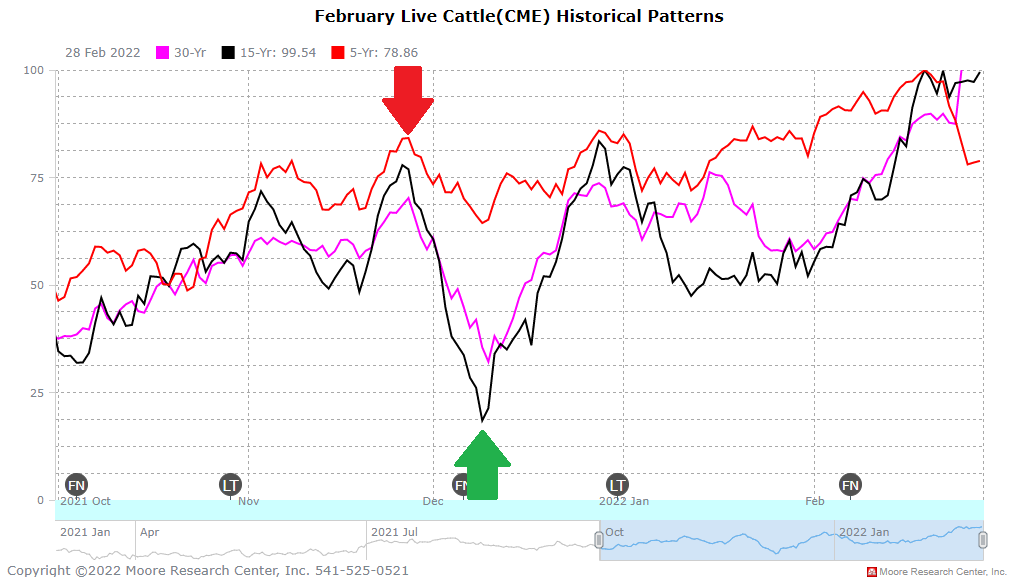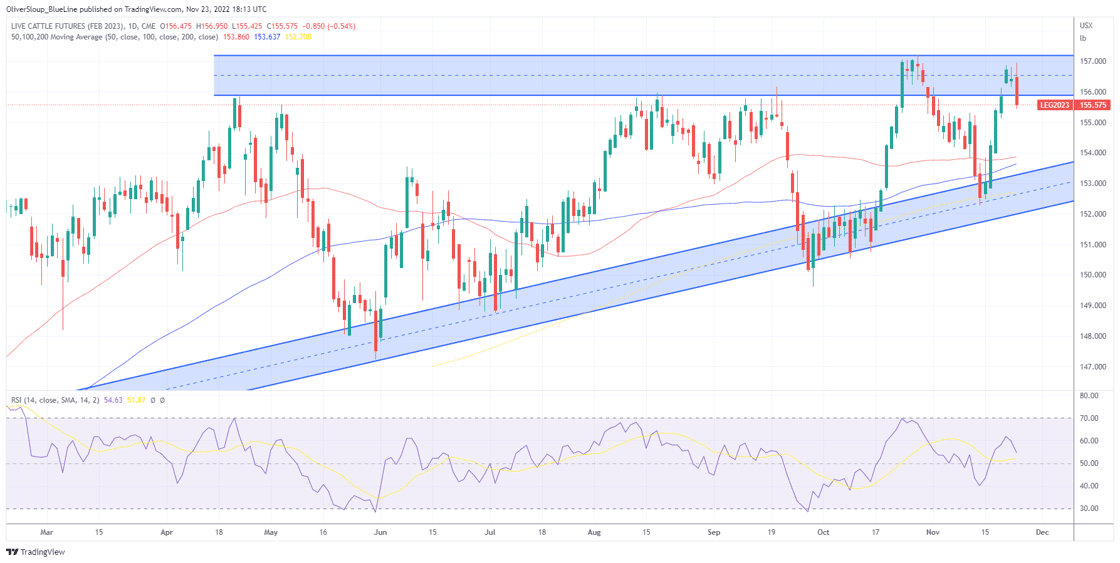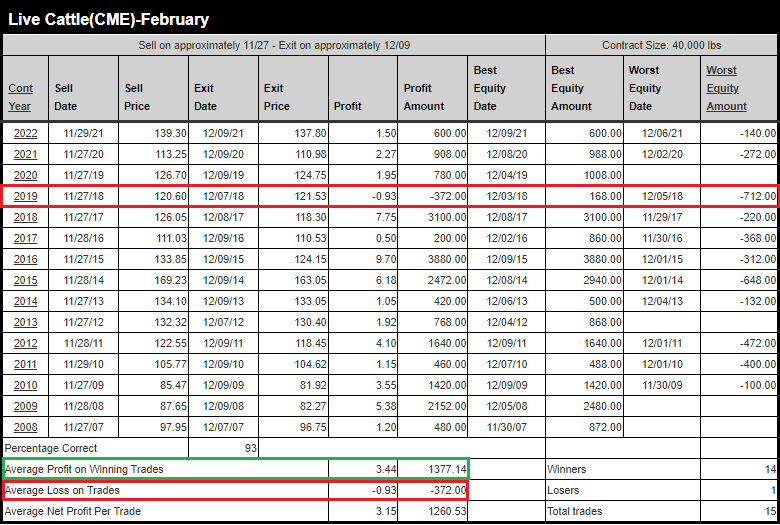
Livestock Roundup SPECIAL REPORT | Seasonal Trade
Posted: Nov. 23, 2022, 12:29 p.m.
February Live Cattle Seasonal
This seasonal trend has played out for 14 of the last 15 years and takes place from November 27th through December 9th. The average pullback has been roughly 3.00.
3 Ways to Play
We've been working to position clients short February live cattle ahead of the seasonal that starts next week. There are three ways to consider playing the bearish trend.
1. Short futures with a stop. Deciding where to short and where to place the start will vary from trader to trader, as each have a different risk profile and risk tolerance.
2. Buy a put. We've been working with clients to buy the January 155 put options. The January options have about a month and a half of time left, which gives us plenty of time on the seasonal. The January options trade off the February futures. The risk on this trade is limited to the price paid for the option.
3. Use more complex options strategies. If you're curious about other ways to get exposure via different options strategies, contact our trade desk: 312-837-3938 or email Seasonals@BlueLineFutures.com
Below is a historical chart of February live cattle. We've noted the beginning of the seasonal trend with the red arrow and the end of the seasonal with the green arrow.

|
Below is a daily chart of February live cattle. We are at the upper end of the risk range which gives us a pretty clear line in the sand for risk. A breakout above resistance and you may consider neutralizing a bearish position. The market rejected the upper end this morning, despite a higher cash trade. We often refer to this as a fundamental rejection. The potential target for exiting a bearish position would be in the trendline support zone around 153. This also happens to be in line with the average pullback during this seasonal. |

|
Below is a year-by-year breakdown of the historical performance of this seasonal trend. We've outlined the one outlier year with red. At the bottom we've outlined the average profit and loss for the trend. |

In case you haven't already, you can sign up for a complimentary 2-week trial of our complete research packet, Blue Line Express.
Sign up for a Free Trial
Start Trading with Blue Line Futures
Don't have an account with Blue Line Futures?
Futures trading involves substantial risk of loss and may not be suitable for all investors. Therefore, carefully consider whether such trading is suitable for you in light of your financial condition. Trading advice is based on information taken from trade and statistical services and other sources Blue Line Futures, LLC believes are reliable. We do not guarantee that such information is accurate or complete and it should not be relied upon as such. Trading advice reflects our good faith judgment at a specific time and is subject to change without notice. There is no guarantee that the advice we give will result in profitable trades. All trading decisions will be made by the account holder. Past performance is not necessarily indicative of future results.
Blue Line Futures is a member of NFA and is subject to NFA’s regulatory oversight and examinations. However, you should be aware that the NFA does not have regulatory oversight authority over underlying or spot virtual currency products or transactions or virtual currency exchanges, custodians or markets. Therefore, carefully consider whether such trading is suitable for you considering your financial condition.
With Cyber-attacks on the rise, attacking firms in the healthcare, financial, energy and other state and global sectors, Blue Line Futures wants you to be safe! Blue Line Futures will never contact you via a third party application. Blue Line Futures employees use only firm authorized email addresses and phone numbers. If you are contacted by any person and want to confirm identity please reach out to us at info@bluelinefutures.com or call us at 312- 278-0500
Like this post? Share it below:
Back to Insights
In case you haven't already, you can sign up for a complimentary 2-week trial of our complete research packet, Blue Line Express.
Free Trial